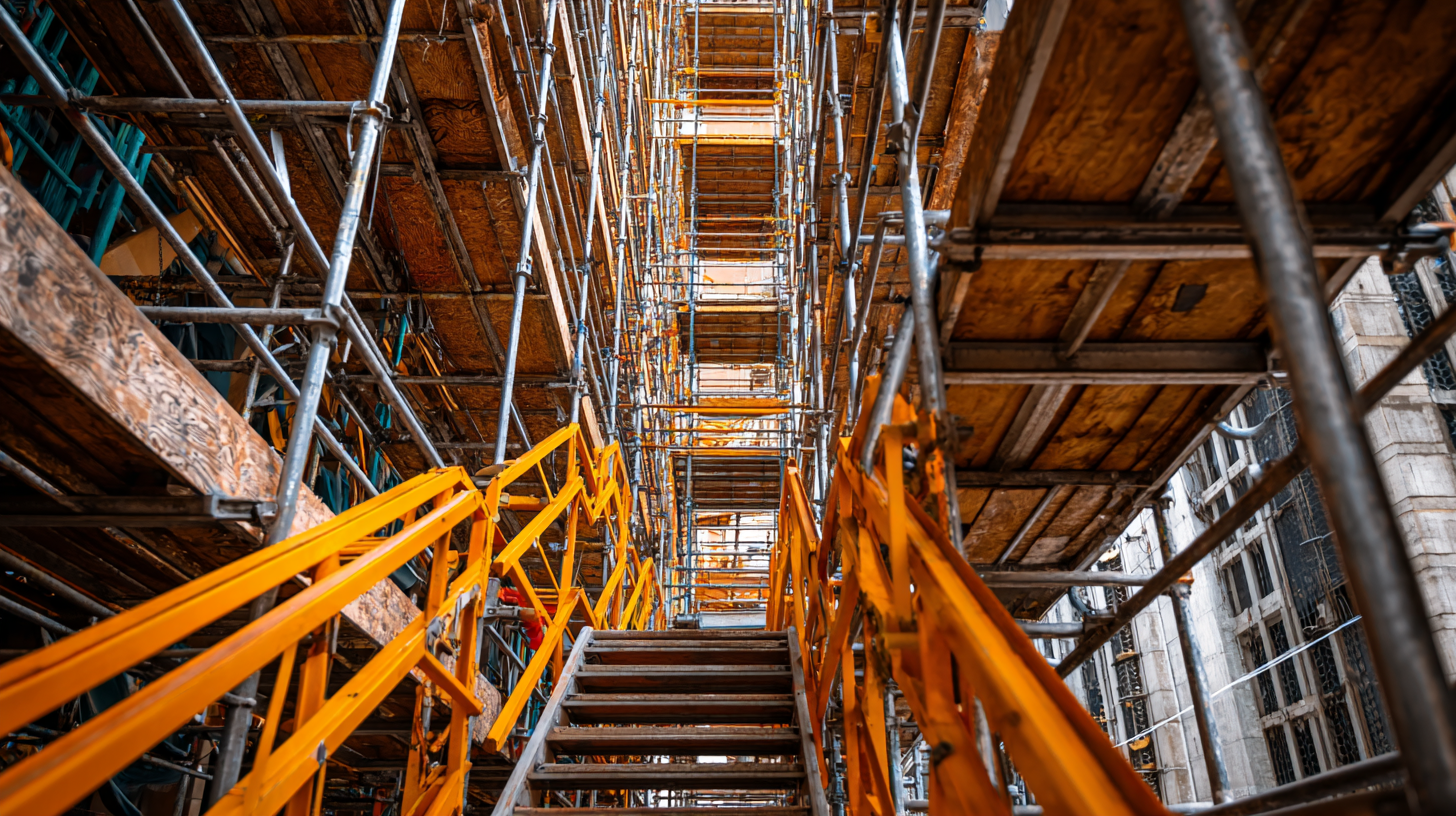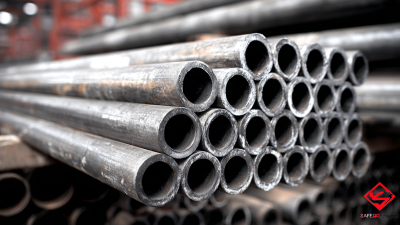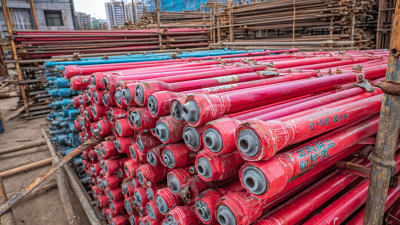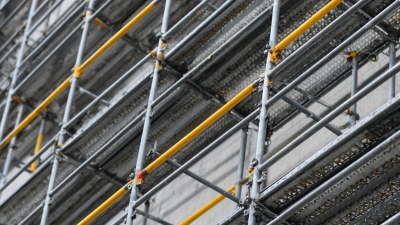 +86 18531741341
+86 18531741341
Leave Your Message
In the construction industry, the safety and efficiency of work at height are paramount, and using a Scaffolding Tower has emerged as a best practice for various projects. According to a report by the Health and Safety Executive (HSE), falls from height remain one of the leading causes of serious injury and fatalities in the construction sector, accounting for 47% of all fatal injuries. Implementing effective scaffolding solutions not only enhances worker safety but also improves productivity. A study by the National Safety Council indicates that companies investing in proper scaffolding systems can reduce their risk of accidents by up to 50%. As construction demands continue to rise, understanding the essential benefits of scaffolding towers becomes crucial for project managers and teams seeking to foster a secure and efficient working environment. This blog will outline the seven key advantages of utilizing scaffolding towers in your construction projects, ensuring optimal safety and operational effectiveness.

 Scaffolding towers are pivotal in ensuring safety and efficiency within construction projects. Designed to provide a stable and elevated work platform, these towers allow workers easy access to heights that would otherwise be difficult or dangerous to reach. Understanding the basics of scaffolding towers starts with recognizing their structure, which typically consists of metal frames and planks that create a robust platform while being easily assembled and disassembled. This adaptability not only enhances the workflow but also allows for quick adjustments to accommodate varying project requirements.
Scaffolding towers are pivotal in ensuring safety and efficiency within construction projects. Designed to provide a stable and elevated work platform, these towers allow workers easy access to heights that would otherwise be difficult or dangerous to reach. Understanding the basics of scaffolding towers starts with recognizing their structure, which typically consists of metal frames and planks that create a robust platform while being easily assembled and disassembled. This adaptability not only enhances the workflow but also allows for quick adjustments to accommodate varying project requirements.
Another essential aspect of scaffolding towers is their compliance with safety regulations. Properly erected towers provide secure working conditions that minimize the risk of falls or accidents, which are prevalent in construction environments. Workers are equipped with guardrails and toe boards, integral features that further enhance safety. Additionally, scaffolding towers come in various sizes and configurations, accommodating unique project specifications, from residential buildings to large commercial sites, making them indispensable in the construction industry. By leveraging scaffolding towers, contractors can ensure that their teams work efficiently, safely, and with ease in reaching their construction goals.
When it comes to construction, safety should be the top priority for workers on site. Scaffolding towers provide enhanced safety features that significantly reduce the risks associated with elevated work. These towers are designed with sturdy materials and built to withstand heavy loads, ensuring that workers can operate confidently at heights. Safety guardrails and anti-slip platforms add an extra layer of protection, minimizing the chances of accidents that can occur when workers are balancing on unstable surfaces.
Moreover, scaffolding towers are often equipped with access ladders and stairways, which ensure that workers can climb and descend safely. This design allows for safe movement when carrying tools and materials, reducing the likelihood of falls or injuries. Additionally, scaffolding equipment undergoes stringent inspections and maintenance checks to ensure they meet safety standards, giving employers peace of mind about their workers' well-being. By incorporating scaffolding towers into construction projects, companies not only create a safer work environment but also promote efficiency, as workers can focus on their tasks without the distraction of safety concerns.
When it comes to construction projects, the efficiency and productivity of the workforce are paramount.
Scaffolding towers serve as invaluable tools in this regard, significantly enhancing operations on site.
According to the Occupational Safety and Health Administration (OSHA), proper scaffolding use can reduce working time lost due to accidents, which can be as high as 25% in uncontrolled environments.
By providing stable and safe work platforms, scaffolding towers minimize risks, allowing workers to focus on their tasks without unnecessary interruptions.
Moreover, a report by the Global Scaffolding Market expects the industry to grow at a rate of 6.4% annually, driven largely by the increasing need for efficiency in construction processes.
Scaffolding solutions enable multi-level access, facilitating rapid movement of materials and personnel. This streamlined approach not only accelerates project timelines but also helps in optimizing labor costs, ultimately improving the overall productivity of construction activities.
When implemented correctly, scaffolding towers can transform the workflow, making them a critical component in modern construction management strategies.
Scaffolding towers have become an indispensable asset in the construction industry due to their remarkable versatility across various tasks. According to a report by Research and Markets, the global scaffolding market is projected to reach $70 billion by 2025, highlighting the increasing reliance on scaffolding solutions. These towers can be easily adapted for different projects, whether it’s for maintaining a high-rise building, painting, or installing electrical fixtures. Their modular design allows for quick assembly and disassembly, minimizing downtime and ensuring that projects remain on schedule.
The ability to customize scaffolding towers for specific tasks is another significant benefit. For example, in projects that require aerial work, such as installing HVAC systems, scaffolding towers can be adjusted to various heights and configurations to provide workers with safe and secure access. The Occupational Safety and Health Administration (OSHA) emphasizes that proper use of scaffolding can reduce the risk of falls, which account for approximately 34% of construction fatalities. By utilizing scaffolding towers, construction managers can ensure not only efficiency but also a safer working environment for their teams, ultimately driving project success.
| Benefit | Description | Applications |
|---|---|---|
| Height Access | Provides a safe platform to reach high places. | Painting, roofing, and maintenance tasks. |
| Stability | Offers a stable working surface that minimizes risks. | Construction sites, event setups, and inspections. |
| Flexibility | Can be configured for a variety of tasks. | Electrical work, plumbing, and facade repairs. |
| Ease of Assembly | Quickly set up without specialized tools. | Residential renovations, commercial projects, and more. |
| Cost-Effectiveness | Reduces labor costs by speeding up project time. | Major construction phases, heavy refurbishments. |
| Safety Features | Equipped with guardrails and secure platforms. | High-risk environments like bridge work and high-rise buildings. |
| Customization | Can be tailored to fit specific job requirements. | Unique architectural designs and specialized trades. |
When it comes to construction projects, cost-effectiveness is often at the forefront of decision-making. Scaffolding towers have emerged as a crucial element in achieving both safety and budget efficiency on job sites. According to a report by the Construction Industry Institute, utilizing scaffolding towers can reduce labor costs by up to 30% due to their ease of assembly and mobility. This is particularly beneficial for large-scale projects where time is equated to money, allowing workers to access elevated areas without the delays typically associated with traditional scaffolding.
In addition to labor savings, scaffolding towers offer increased operational efficiency. A study by the Occupational Safety and Health Administration (OSHA) highlights that safer work environments, facilitated by the use of stable scaffolding systems, lead to a decrease in work-related accidents by over 50%. This decline not only protects workers but also mitigates costs associated with workplace injuries and project delays. With the added advantage of adaptability and quick setup, scaffolding towers emerge as a financially savvy choice for contractors who are looking to streamline their operations while maintaining a high standard of safety and compliance.







